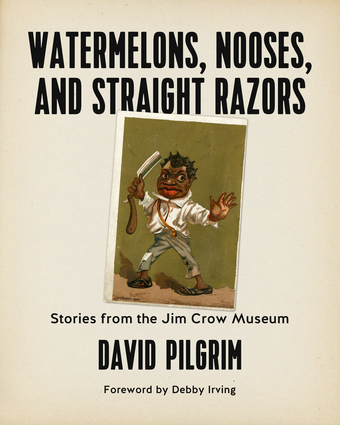Overview
Watermelons, Nooses, and Straight Razors examines the origins and significance of several longstanding anti-black stories and the caricatures and stereotypes that undergird them. It features images from the Jim Crow Museum, the nation's largest publicly accessible collection of racist objects. These pictures document the social injustice that Martin Luther King Jr. referred to as a pus-filled boil "which must be exposed to the light of human conscience and the air of national opinion before it can be cured." Each chapter concludes with a story from the author's journey, challenging the integrity of racial narratives.Reviews
"One of the most important contributions to the study of American History that I have ever experienced." —Henry Louis Gates Jr., director of the W.E.B. Du Bois Institute for African American Research on the Jim Crow Museum
"This was a horrific time in our history, but it needs to be taught and seen and heard. This is very well done, very well done." —Malaak Shabazz, daughter of Malcolm X and Betty Shabazz on the Jim Crow Museum
"The museum's contents are only a small part of the damaging effects of the Jim Crow laws that were found all across America, including bright and sunny California. This history is not only an important part of understanding where America was but, in an age of states making it harder and harder for citizens to vote, it is relevant to note that we have been here before." —Henry Rollins, host of the History Channel's 10 Things You Don't Know About
"The museum has been one of my treasured go-to resources for teaching people about the deep-seated roots of the racism that persists in our collective subconscious. Only by facing our history and its hold on our psyche can we construct a better culture. This work is invaluable." —damali ayo, author of How to Rent a Negro, and Obamistan! Land without Racism
"With the Black Lives Matter movement in the streets and a renewed national debate on institutional white supremacy, David Pilgrim makes a vital contribution to help us understand the grotesque depths of the psychological and cultural war of anti-Black racism throughout the Jim Crow era. In our quest to build powerful multiracial grassroots movements for collective liberation, Pilgrim's book is a tool to help decolonize our minds, attack anti-Black racism in all of its forms, and create a multiracial democracy with economic justice for all." —Chris Crass, author of Towards Collective Liberation
"This is a horrifying but important book that should be widely read to gain an accurate view of the long history of racism in the US." —Barbara H. Chasin, Socialism and Democracy, on Understanding Jim Crow
"For decades the author has been on a Pilgrimage to bring out from our dank closets the racial skeletons of our past. His is a crucial mission, because he forces us to realize that race relations grew worse in the first several decades of the twentieth century—something many Americans never knew or now want to suppress. This book allows us to see, even feel the racism of just a generation or two ago—and Pilgrim shows that elements of it continue, even today. See it! Read it! Feel it! Then help us all transcend it!" —James W. Loewen, author, Lies My Teacher Told Me on Understanding Jim Crow
"To justify the exclusion of and violence toward African Americans after the Civil War, pop culture churned out objects, images, songs, and stories designed to reinforce widespread beliefs about white supremacy and black inferiority. Pilgrim has pulled together examples of such so-called 'black memorabilia,' and he clearly explains the meaning and purpose behind them." —Lisa Hix, Collectors Weekly, on Understanding Jim Crow Author Biography
Debby Irving is an educator and the author of Waking Up White. David Pilgrim is a professor, orator, and human rights activist, best known as the founder and curator of the Jim Crow Museum, located at Ferris State University.

